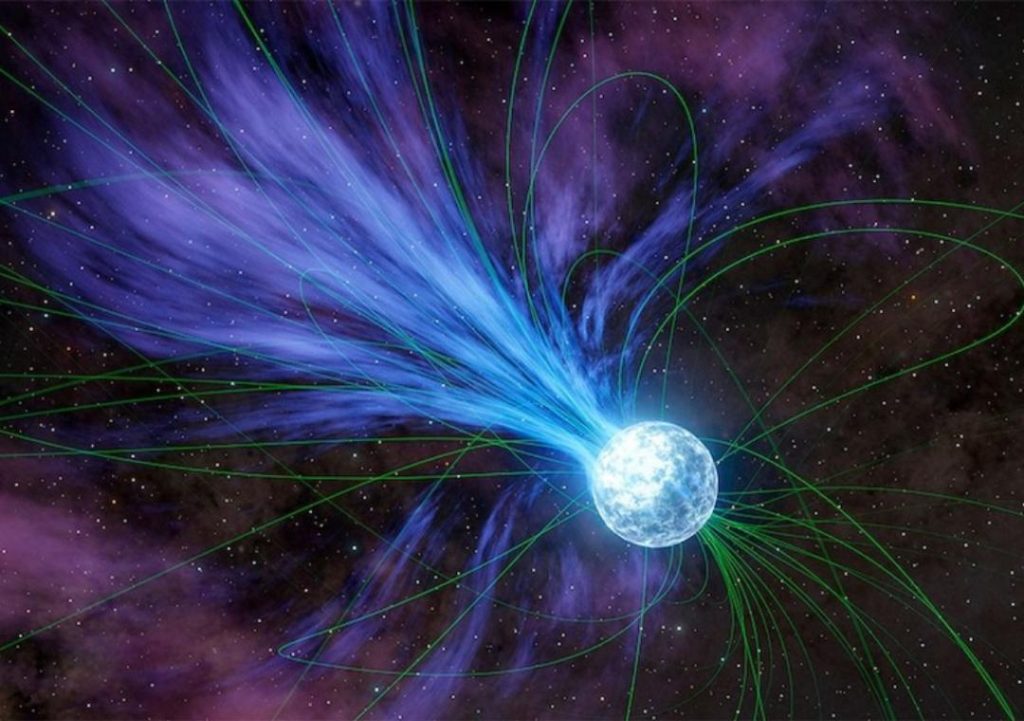
Gold & Platinum Created through Neutron Stars’ Explosions: Study
For centuries, humans have been fascinated by the origins of precious metals like gold and platinum. Scientists have long debated how these valuable elements came to be, with theories ranging from ancient asteroid impacts to volcanic activity. Recently, a groundbreaking study led by Columbia University student Anirudh Patel has shed new light on the mystery, revealing that magnetars or highly magnetized neutron stars played a crucial role in the creation of these precious metals.
According to the study, magnetars exploded and released flares that contained elements like gold and platinum in a cosmic event that occurred over 20 years ago. This phenomenon is not a rare occurrence, as magnetar explosions happen approximately once per decade in the Milky Way and annually across the observable universe.
To understand how this process works, it’s essential to first grasp the concept of neutron stars. These incredibly dense objects form when a massive star collapses under its own gravity, causing a massive explosion known as a supernova. The resulting neutron star is so dense that a sugar-cube-sized amount of its material would weigh about the same as Mount Everest.
Magnetars, in particular, are a type of neutron star with extremely strong magnetic fields, which are trillions of times stronger than the Earth’s magnetic field. These magnetic fields are so powerful that they can create intense radiation and accelerate particles to incredible speeds.
Now, let’s dive into the study’s findings. Patel and his team analyzed data from the Fermi Gamma-Ray Space Telescope, which had detected a series of powerful explosions in the distant universe. By studying the light curves and spectra of these events, the researchers were able to identify the characteristic signatures of magnetar explosions.
The team discovered that the explosions released a wealth of heavy elements, including gold and platinum, into space. These elements were created through a process known as rapid neutron capture, or r-process nucleosynthesis. This process occurs when intense radiation and high-energy particles collide with atomic nuclei, causing them to capture neutrons and build up heavier elements.
The study found that the magnetar explosions released a significant amount of r-process material into space, which then dispersed throughout the galaxy. Over time, this material was incorporated into new stars, planets, and even the Earth itself. This means that the gold and platinum present on our planet today has a cosmic origin, created in the fiery hearts of magnetars and forged in the intense explosions that occur in the distant universe.
This discovery has significant implications for our understanding of the origins of the elements. Prior to this study, scientists had assumed that the heavy elements present on Earth were created through the slow process of stellar nucleosynthesis, where stars gradually build up heavier elements over millions of years. However, the findings of Patel and his team suggest that magnetar explosions may play a crucial role in the creation of these elements, particularly in the early universe.
In conclusion, the study led by Anirudh Patel has provided a groundbreaking insight into the origins of precious metals like gold and platinum. The discovery that magnetars or highly magnetized neutron stars helped create these elements through neutron star explosions has significant implications for our understanding of the universe and the elements that make up our planet.
As we continue to explore the mysteries of the cosmos, we may uncover even more surprising secrets about the origins of the elements. For now, the discovery of magnetars’ role in creating gold and platinum is a testament to the incredible complexity and beauty of the universe, and the ongoing quest to understand its many secrets.
News Source:






